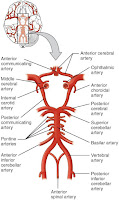HYPERTHYROIDISM

HYPERTHYROIDISM 1. Mrs. Kamilioni Nyanga, aged 35 years, a business woman, married with 2 children was admitted to your ward with complaints of insomnia, heat intolerance and fine tremors. A diagnosis of hyperthyroidism was arrived at after thorough investigations. a. Define hyperthyroidism. b. State the three types of hyperthyroidism. c. You decide to carry out a physical examination/assessment on Mrs. Nyanga. State the four techniques that you are going to use when performing a physical assessment. d. Write down the management of Mrs. Nyanga while in hospital up to discharge ANSWERS a. Definition of Hyperthyroidism: This is a disorder of the endocrine system caused by excessive thyroid hormones, thyroxin and triiodothyroxine in the blood, characterized by increased body metabolic rate. b. Three types of Hyperthyroidism: Graves’s disease: The most common form of hyperthyroidism. It is an autoimmune disorder, associated with a diffuse enlargement of the gland, in which antibodies...


